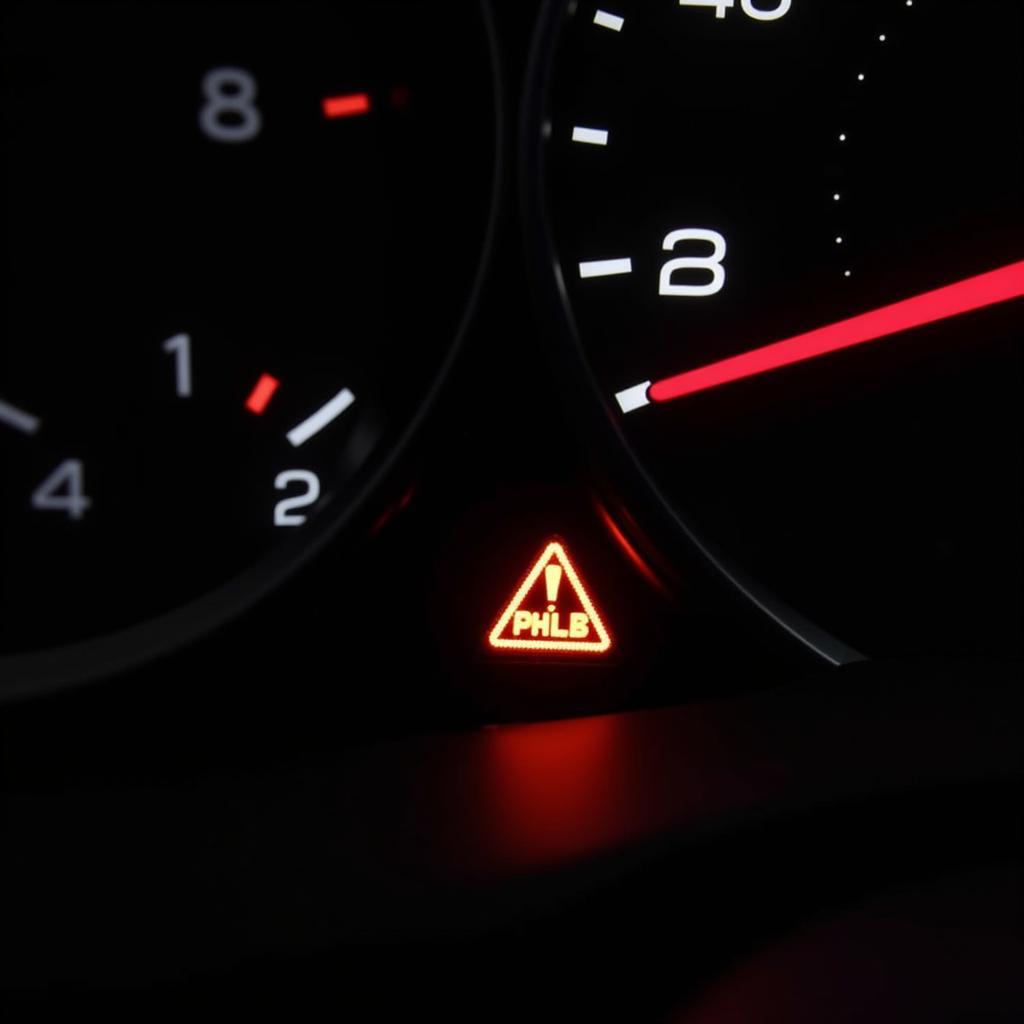A glowing brake warning light on your GMC Acadia’s dashboard can be a nerve-wracking experience. This crucial signal often means something needs attention within your braking system, ranging from a simple parking brake engagement to more serious issues. Let’s delve into the common causes, troubleshooting tips, and when to seek professional help for your GMC Acadia brake warning light.
Understanding Your Brake Warning Light
The brake warning light serves as a vital safety feature, alerting you to potential issues within your GMC Acadia’s braking system. It’s important to remember that this light doesn’t always signal a complete brake failure. Instead, it can indicate a range of concerns, from minor to severe.
Here’s a quick breakdown of what your brake warning light could mean:
-
Parking Brake Engaged: The simplest explanation is often the most likely. If you see the brake warning light illuminated and you haven’t experienced any braking problems, start by checking if your parking brake is fully disengaged.
-
Low Brake Fluid: One of the most common reasons for the warning light is low brake fluid. This indicates a potential leak in your braking system, which needs immediate attention.
-
Worn Brake Pads: Brake pads are designed to wear down over time. When they reach a certain point of wear, the brake warning light is triggered to alert you to replace them.
-
ABS Issue: The Anti-lock Braking System (ABS) is a safety feature that prevents wheel lockup during hard braking. If the ABS warning light illuminates along with the brake warning light, it could indicate a problem with the ABS module, wheel speed sensors, or related components.
-
Other Brake System Malfunctions: Several other issues, such as a failing master cylinder, malfunctioning brake lines, or problems with the brake booster, can trigger the brake warning light.
 GMC Acadia Dashboard with Brake Warning Light
GMC Acadia Dashboard with Brake Warning Light
Troubleshooting Tips for GMC Acadia Brake Warning Light
While it’s always recommended to consult a qualified mechanic for brake-related issues, here are a few preliminary checks you can perform:
-
Check Your Parking Brake: As mentioned earlier, ensure the parking brake is fully disengaged. Sometimes, even a slight engagement can trigger the warning light.
-
Inspect Brake Fluid Level: Locate your GMC Acadia’s brake fluid reservoir (refer to your owner’s manual for its location). Check the fluid level. If it’s below the “MIN” mark, your braking system might have a leak.
-
Visually Inspect Your Brakes: Carefully examine your brake pads and rotors for signs of excessive wear, cracks, or damage.
When to Seek Professional Help
If you’ve performed the basic checks and the brake warning light persists, it’s crucial to seek professional help immediately. Driving with a potential brake issue can be extremely dangerous.
Here are instances where you should contact a qualified mechanic without delay:
-
Brake Warning Light Stays On: If the light remains illuminated even after disengaging the parking brake and confirming sufficient brake fluid, it’s time for professional diagnosis.
-
Spongy or Soft Brake Pedal: A soft or spongy brake pedal feel can indicate air in the braking system, a serious problem requiring immediate attention.
-
Grinding or Squealing Noises: Unusual noises while braking, such as grinding or squealing, often indicate severely worn brake pads or other brake component issues.
-
Pulling to One Side: If your GMC Acadia pulls to one side while braking, it could be a sign of uneven brake pad wear, a stuck caliper, or a problem with the hydraulic system.
 Mechanic Inspecting GMC Acadia Brakes
Mechanic Inspecting GMC Acadia Brakes
The Importance of Regular Brake Maintenance
Preventing brake issues is always preferable to dealing with them after they arise. Regular brake maintenance plays a vital role in keeping your GMC Acadia’s braking system in optimal condition.
Here are some key maintenance tips:
-
Brake Fluid Flush: It’s generally recommended to flush your brake fluid every 2 years or 24,000 miles. Brake fluid can absorb moisture over time, reducing its effectiveness.
-
Brake Inspection: Have your brakes inspected by a qualified mechanic at least once a year or every 12,000 miles, or more frequently if you drive in severe conditions.
-
Timely Brake Pad Replacement: Replace your brake pads as soon as they reach their minimum thickness specification. Don’t wait until you hear noises or experience braking problems.
2011 gmc acadia brake warning light
Conclusion
A glowing brake warning light on your GMC Acadia’s dashboard should never be ignored. While it might indicate a minor issue, it could also signal a serious problem within your braking system. By understanding the potential causes, performing basic troubleshooting, and seeking professional help when needed, you can ensure your safety and the longevity of your GMC Acadia’s brakes.
